 You probably already know if you have roaches, mice, or rat infestations in your home. But it is important to know how big the problem is, how pests are entering, and where pests are getting their food and water, and how best to get rid of them and prevent them from returning.
You probably already know if you have roaches, mice, or rat infestations in your home. But it is important to know how big the problem is, how pests are entering, and where pests are getting their food and water, and how best to get rid of them and prevent them from returning.
To find out, go through every room in your home, focusing on the kitchen and bathroom, where pests are usually worst. You may need a flashlight for the dark areas.
Start in Your Kitchen
Look out for waste and droppings: Cockroach droppings look like dark smudges with dark dots. Their egg cases are yellowish and ribbed, about the size of a small fingernail. Rodent droppings are brown, the size and shape of rice grains.
Look out for Chew marks in woodwork, walls, and food containers. Gaps, cracks, and holes in walls, along baseboards and windows, and around pipes and wires, and drains: Cockroaches can squeeze through cracks as small as 1/8 of an inch. Mice can get through holes as small as 1/4 inch.
Look out for Leaky faucets and pipes or leaks in ceilings and walls. Open food packages, sticky surfaces, pet food left out and garbage cans that don’t close tightly.
Try Reduce Clutter
Recycle piles of newspapers, paper bags, cardboard, and bottles, especially around stoves and refrigerators. Store clothing and linens, you don’t use in sealed plastic boxes or bags.
Vacuum Thoroughly
Use a vacuum with a hose and crevice tool. Special filter vacuums, known as HEPA or allergen-reducing vacuums, work best. Vacuum behind and under refrigerators and stoves. Empty cabinets, throwing away old food and items with signs of pests. Vacuum inside gaps and holes in walls and in and behind cabinets.
Wash Hard Surfaces
Wear household gloves, fill two buckets with warm water: one with a mild soap or detergent, and one with plain water for rinsing, separate rinse water will help you, avoid spreading insect eggs, food, and other wastes and Change the water often. Use a sponge and plastic scouring pad or scrub brush to scrub and rinse:
• Countertops, tables, and surfaces where food is stored, prepared, or eaten.
• Under the stovetop, inside burners, and under and behind the stove, refrigerator, and dishwasher.
• Inside the rubber seal of the refrigerator door.
• Inside drawers, cabinets, and shelves in the kitchen and bathroom.
• Floors.
For hard-to-remove stains, use a mild bleach solution (1-part bleach, 10 parts water) or a cleaning product with bleach. Start high and work down. When you’re done, seal the vacuum bag in plastic and throw it out.
Deprive them of what they love most; food and shelter:
Seal up cracks and small holes and fill larger holes and gaps. Store all loose food in tight containers and manage your garbage well. Use garbage cans with tight-fitting lids and clean them more often, inside out.
For other pests, you can control and prevent them by using a number of do-it-yourself chemicals or engaging our services , if infestation is beyond control. Do-it-yourself pest control products are becoming more common as people are becoming more educated on the subject of pest control. Choose materials that are effective and can give you good value for your money.

 NYC neighborhoods have the most rodent complaints and they are a lot bigger than you probably realize, and possess the uncanny ability to drag a slice of pizza onto the subway. Rat Complaints and sightings are soaring in Manhattan, including neighborhoods like Chinatown and the Lower East Side.
NYC neighborhoods have the most rodent complaints and they are a lot bigger than you probably realize, and possess the uncanny ability to drag a slice of pizza onto the subway. Rat Complaints and sightings are soaring in Manhattan, including neighborhoods like Chinatown and the Lower East Side. Baits are the primary pesticides used to treat cockroach infestations. They can be packaged as pastes, gels, granules, or dusts. Most insecticides used in baits are slow acting. Consequently, an effective bait program does not give immediate results, but may take 7 days or longer to provide visual evidence of its effects. Baits can be quite effective for long-term control of cockroaches unless the cockroaches have other food sources available to them.
Baits are the primary pesticides used to treat cockroach infestations. They can be packaged as pastes, gels, granules, or dusts. Most insecticides used in baits are slow acting. Consequently, an effective bait program does not give immediate results, but may take 7 days or longer to provide visual evidence of its effects. Baits can be quite effective for long-term control of cockroaches unless the cockroaches have other food sources available to them.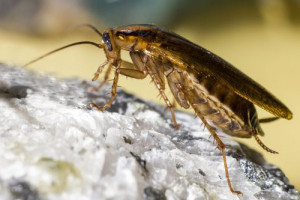 It hardly takes a genius to notice that cockroaches usually make their raids on pantries, countertops and kitchen appliances when evening falls. They can get into houses in a variety of ways, food packages, used furniture, appliances, suitcases and more, and once there, often make homes in the overlooked corners and crevices of your home.
It hardly takes a genius to notice that cockroaches usually make their raids on pantries, countertops and kitchen appliances when evening falls. They can get into houses in a variety of ways, food packages, used furniture, appliances, suitcases and more, and once there, often make homes in the overlooked corners and crevices of your home.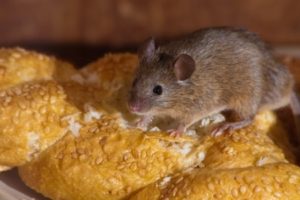 In the fall and winter months, rodents, like the house mouse, are looking for a safe place to spend the winter. Since these mammals are commensal, they rely on humans to help them survive. When they find their way into our homes they will look for a safe and undisturbed place to build their nest. Believe it or not, mice will hide just about anywhere inside your home, including in: Attics, basements, closets, car trunks or under the hood, inside walls, storage boxes, wood piles and any other undisturbed areas. These hiding places can be categorized into two, Outdoor Hiding Spots and Indoor Hiding Spots.
In the fall and winter months, rodents, like the house mouse, are looking for a safe place to spend the winter. Since these mammals are commensal, they rely on humans to help them survive. When they find their way into our homes they will look for a safe and undisturbed place to build their nest. Believe it or not, mice will hide just about anywhere inside your home, including in: Attics, basements, closets, car trunks or under the hood, inside walls, storage boxes, wood piles and any other undisturbed areas. These hiding places can be categorized into two, Outdoor Hiding Spots and Indoor Hiding Spots.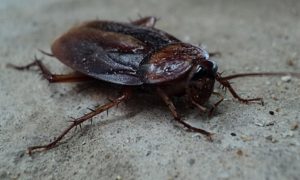 Naturally roaches are seen in warm areas of the house; under logs, around cabinets, and all of that. This why you generally find them in numbers indoors rather than outdoors. Roaches are not the best of companies, so by all means try to keep them out of the home, else you may find that roommate that you never had and never wanted. Like every other creature on the planet they have a reaction to temperature and this write up will just educate you on how to exploit this.
Naturally roaches are seen in warm areas of the house; under logs, around cabinets, and all of that. This why you generally find them in numbers indoors rather than outdoors. Roaches are not the best of companies, so by all means try to keep them out of the home, else you may find that roommate that you never had and never wanted. Like every other creature on the planet they have a reaction to temperature and this write up will just educate you on how to exploit this.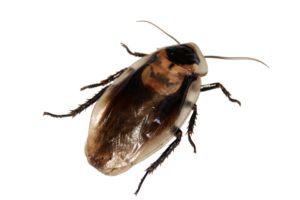 No one ever announced that they got rid of their cockroach infestation easily, and that is because getting rid of roaches is one of the most cumbersome tasks anyone can take on even for professional exterminators. They never seem to go away completely; one and the next day you will find another one, take care of that one and it doesn’t stop you from finding 10 more another time. It all seems like they are unstoppable, and it’s even worse knowing that they have the genetics that helps them survive harsh living conditions, including various traps that humans try to kill them with.
No one ever announced that they got rid of their cockroach infestation easily, and that is because getting rid of roaches is one of the most cumbersome tasks anyone can take on even for professional exterminators. They never seem to go away completely; one and the next day you will find another one, take care of that one and it doesn’t stop you from finding 10 more another time. It all seems like they are unstoppable, and it’s even worse knowing that they have the genetics that helps them survive harsh living conditions, including various traps that humans try to kill them with.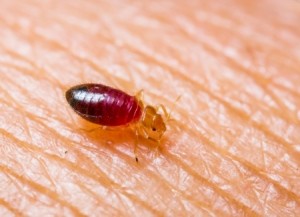 The bad news around here is that bed bugs can spread. They can catch a ride in your clothing or bag, and hop off somewhere else to start a new life. It’s worth considering this possibility, as you are. The good news is, it is possible to avoid this using some precautions.
The bad news around here is that bed bugs can spread. They can catch a ride in your clothing or bag, and hop off somewhere else to start a new life. It’s worth considering this possibility, as you are. The good news is, it is possible to avoid this using some precautions.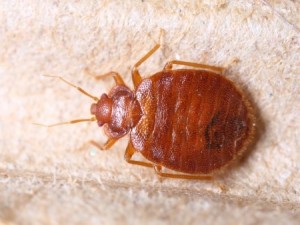 Most times, it is hard to tell if you’ve been bitten by a bed bug unless you find bed bugs or signs of infestation. When bed bugs bite, they inject an anesthetic and an anticoagulant that prevents a person from realizing they are being bitten. Most people do not realize they have been bitten until bite marks appear anywhere from one to several days after the initial bite. The bite marks are similar to that of a mosquito or a flea — a slightly swollen and red area that may itch and be irritating. The bite marks may be random or appear in a straight line. Other symptoms of bed bug bites include insomnia, anxiety, and skin problems that arise from profuse scratching of the bites.
Most times, it is hard to tell if you’ve been bitten by a bed bug unless you find bed bugs or signs of infestation. When bed bugs bite, they inject an anesthetic and an anticoagulant that prevents a person from realizing they are being bitten. Most people do not realize they have been bitten until bite marks appear anywhere from one to several days after the initial bite. The bite marks are similar to that of a mosquito or a flea — a slightly swollen and red area that may itch and be irritating. The bite marks may be random or appear in a straight line. Other symptoms of bed bug bites include insomnia, anxiety, and skin problems that arise from profuse scratching of the bites.